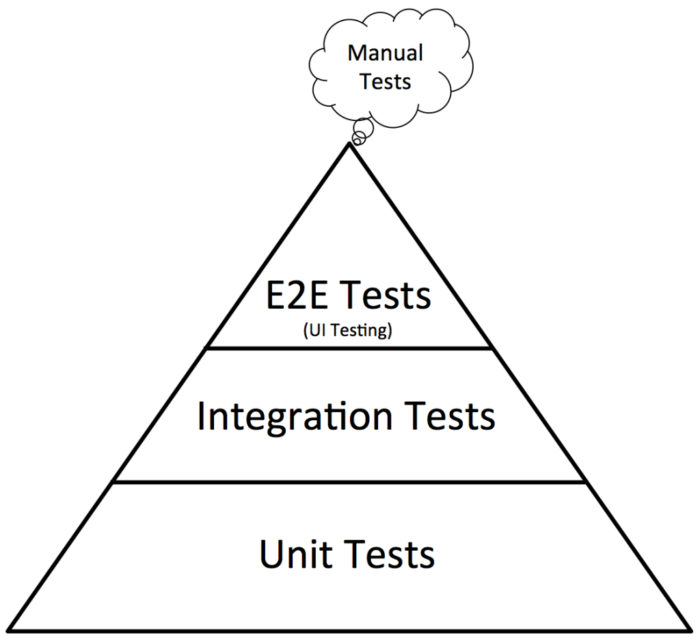Getting Started with the Test Automation Pyramid – An Ultimate Guide
Shreya Bose, Technical Content Writer at BrowserStack - October 28, 2022
Before jumpstarting your test automation pyramid, ask the following question:
Is your testing team (or an individual tester) spending far too much time waiting for their test suites to complete running?
If the answer is yes, chances are that this particular QA team or tester has not implemented a test automation pyramid. And they should. Let’s understand how to jumpstart a testing pyramid that will drastically speed up your automated tests.
What is a Test Automation Pyramid?
The Testing Pyramid is a framework that can help both developers and QAs create high-quality software. It reduces developers’ time to identify if a change they introduced breaks the code. It can also help build a more reliable test suite.
- Essentially, the testing pyramid, also referred to as the test automation pyramid, lays out the types of tests that should be included in an automated test suite. It also outlines the sequence and frequency of these tests.
- The whole point is to offer immediate feedback to ensure that code changes do not disrupt existing features.
The different levels of a Test Automation Pyramid
This test automation pyramid or a testing pyramid operates through three levels:
Level 1 – Unit Tests
Unit tests form the base of the test automation pyramid. They test individual components or functionalities to validate that it works as expected in isolated conditions. It is essential to run several scenarios in unit tests – happy path, error handling, etc.
- Since this is the most significant subset, the unit test suite must be written to run as quickly as possible.
- Remember that the number of unit tests will increase as more features are added.
- This test suite must be run every time a new feature is added.
- Consequently, developers receive immediate feedback on whether individual features are working as they are.
Needless to say, a fast-running unit test suite encourages devs to run it as often as possible. An excellent way to build a robust unit test suite is to practice test-driven development (TDD). Since TDD requires a test to be written before any code, the code is more straightforward, transparent, and bug-free.
Follow-Up Read: BDD vs TDD vs ATDD
Level 2 – Integration Tests
Unit tests verify small pieces of a codebase. However, integration tests need to be run to test how this code interacts with other code (that form the entire software). Essentially, these are tests that validate the interaction of a piece of code with external components. These components can range from databases to external services (APIs).
- Integration tests are the second layer of the test automation pyramid. This means that it should not be run as frequently as unit tests.
- Fundamentally, they test how a feature communicates with external dependencies.
- Whether a call to a database or web service, the software must communicate effectively and retrieve the correct information to function as expected.
Remember that integration tests involve interaction with external services so they will run slower than unit tests. They also require a preproduction environment in which to run.
Level 3 – End-to-End Tests
The top level of the testing pyramid is the end-to-end tests. These ensure that the entire application is functioning as required. End-to-end tests do precisely what the name suggests: test that the application works flawlessly from start to finish.
- End-to-end tests are at the top of the testing pyramid as they take the longest to run.
- When running these tests, it is essential to imagine the user’s perspective.
- How would an actual user interaction with the app? How can tests be written to replicate that interaction?
They can also be fragile since they have to test various user scenarios. Like integration tests, these tests may also require the app to communicate with external dependencies, thus adding to possible bottlenecks in completion.
In the following webinar, Benjamin Bischoff takes viewers through the rationale behind their end-to-end test strategy at Trivago. Also, understand their challenges while shaping the strategy, such as test environments, processes, development principles, etc.
Why should Agile Teams use the Test Automation Pyramid?
Using the test automation pyramid is especially advantageous for agile teams:
- Agile processes emphasize speed and efficacy. The testing pyramid offers this by streamlining the testing process.
- With a clear progression and logic introduced to the testing pipeline, work gets done faster.
- Since the pyramid is built to run the most accessible tests at the beginning, testers manage time better, get better results, making life easier for everyone involved.
- The testing pyramid provides testers with the right priorities.
If test scripts are written with a greater focus on the UI, then chances are that core business logic, and back-end functionality is not sufficiently verified. This affects product quality and leads to more work for the team. Also, since the TAT (turnaround time) of UI tests is high, it leads to lower test coverage overall. By implementing the test automation pyramid, such situations are entirely avoided.
In automated testing, tools and frameworks like Selenium execute scripted tests on a software application or component to ensure it works as expected. Its entire objective is to reduce human effort and oversight. But for a machine to yield the right results, it must be given the right direction.
Try Automation Testing on a Real Device Cloud
The test automation pyramid strives to do this by organizing and structuring the test cycle. This streamlines the entire process, brings efficient time management, and gives testers a time-tested blueprint to shape their projects.
Follow-Up Read: Mobile Testing Pyramid




